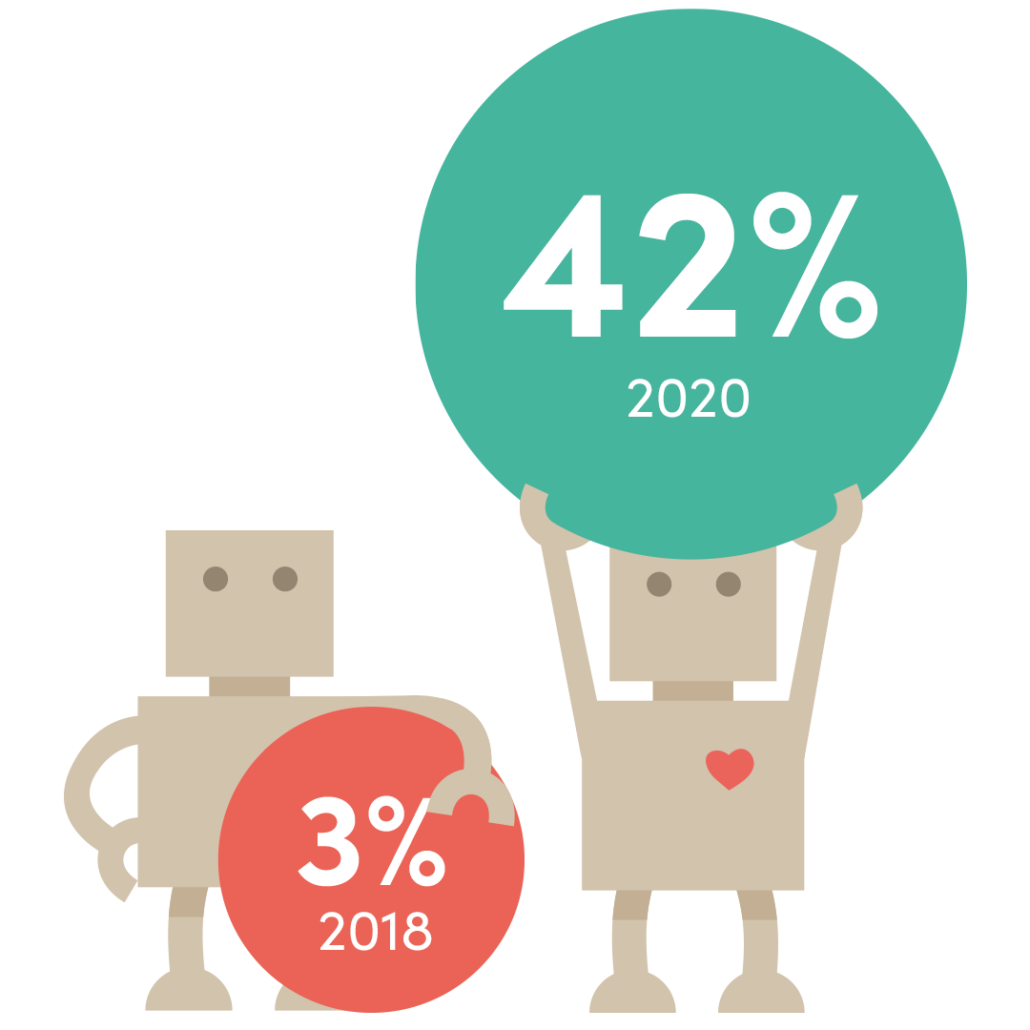The last two years of spectacular growth in virtual community events seems to be slowing across Australia. We’re hearing reports of lower peer-to-peer (P2P) participant numbers and higher digital advertising CPA. While we’re exploring the underlying influences causing this shift, we’ve been laser-focused on helping our clients cope with the change.
The pressure is on to maintain performance and hit targets. Our first step is often a review of the inbound marketing plan and the registration process. Often we find ways to optimise both. By improving the conversion rate we reduce the CPA while enhancing the number of participants. Plus we ensure more of your potential supporters are welcomed rather than confused, leading to dropouts during the acquisition process.
Imagine the positive impact an extra 10-20% of participants might have on your event, without spending more on acquisition… We’re sure you agree it sounds great! So here are our 6 quick ways to maximise your recruitment efforts regardless of budget.
- Make sure you know “What’s going on?”
Borrowing the wise words of Marvin Gaye, first of all you really need to know “What’s going on?” Not just with the footy, the wild weather and your crypto wallet, but every step of your recruitment journey. What is the ‘stickiest’ part of your registration form?
Do your ads entice interest? Are the correct humans seeing your ads? Are leads finding what they expect when they arrive at the first step of registration? Are they racing through rego at lightning speed? Or are they losing the will to live (or more likely the wifi) halfway through and disappearing into a void?

Google Analytics and Hotjar should be your best fundraising friends. They are the closest things we have found to the fabled ‘Magic Money Tree’. When set up correctly, the data captured can be analysed to track people moving through each part of your registration funnel. Insights gleaned from the data are vital to the optimisation process: they show if, where and quite possibly why supporters are dropping out.
Is this all a bit new? Access to Google goodies governed by the IT team? Concerned about the cost of a consultant?
Let us help! Google has a heap of online tutorials which are fantastic for your own CPD. We can help shape a discussion with the IT team to derisk things for them. We can also help you build the case for investment in this area since it will speedily pay off.
- What’s the goal?
Sometimes the main aim of a supporter’s experience might be unclear: is it intent, consideration, nurture or action? For the registration processes, however, we know what we’re after and can agree on some measurable goals! One major P2P platform shared some benchmark 2021 conversion rates. They ranged from 18.4% (social traffic) to 24.6% (direct and email). Once you have Google Analytics set up and are tracking ecommerce / event performance, how do your stats compare?
Depending how you set up your registration journey, there might be friction in all sorts of places. An initial step sometimes entails creating an account or logging back into an account. This could represent a blocker for some users. In other cases, the initial step could be exciting and simple: confirm the type of challenge you wish to tackle for a great cause, for example.
Each step and in fact every question of your registration flow has the potential to make a huge impact on overall conversion. While personal data capture (such as asking for a birth date) and payments are often sources of friction, we have been exploring and experimenting with data capture in order to optimise the process as much as possible.
We used to just work to collect registrants. Now we seek to inspire, connect with and motivate your potential supporters by gaining small increments of commitment from them before we get into the harder parts of a process.

This approach has become our way of working due to weaving analytics, content options and funnel performance reviews into many experiments. By exploring things in depth we have been able to show measurable improvements in conversion rate.
The last couple of years have seen us learn more about the role of early questions in overall performance. The results probably won’t surprise anyone: welcome people with happy, awesome and exciting questions, not dry, complex or painful ones. (It is true that baseline step 1 conversion does also depend very heavily on advertising strategy, tactics and the quality of traffic arriving at the registration process, but for now let’s assume this part of the machine is working fantastically.) Had we not set goals throughout the registration flow we would never have been able to test and prove ways to optimise the overall experience.
By breaking down each step, using Hotjar to see which questions trigger the most cognitive ‘meh’ from users and rearranging virtual event registration steps we have been able to push our cold social traffic end-to-end conversion rates up to over 43% (even for complex, high value events).
- You want me to do what?
An insight we captured a number of years ago: investigate every part of a supporter journey as the conversion might be tanking due to an issue ‘upstream’ from where you are looking.
Are you showing a quick advert to cold audiences in Facebook and directing them straight to the first step of a complex registration process? Would this process enable you to explain what they’re signing up to, how they could get involved and the impact of their participation?
Often, if the event is more complicated than a morning coffee, a “direct to reg” approach does not perform as well as adding an interstitial landing page which can reinforce motivation, excitement and intent. Once people have learned more about the proposition, their elevated levels of intent make them more likely to complete the rego journey.

Think about ‘warming up’ your cold audiences by:
- Testing ad copy that is clear about who, when, what and how
- Using more video / animated ads
- Sending traffic to an optimised landing page before registration
- Showing more social proof in the early parts of the journey
- Leveraging scarcity, timeliness and pricing tactics within a landing page
- Testing Facebook Instant Experiences to provide a landing-page-like warmup before the form
We find many warmer audiences and those we have retargeted do convert well if taken directly to the start of the registration form since they are primed for action. In their case, the benefits of additional intent are outweighed by the impact of extra steps in the journey.
- Time to ‘Marie Kondo’ that registration form
At a very basic level, the more questions you ask in a registration flow, the more friction you are likely to add to the journey.
For most of the last 25 years digital fundraisers have asked their legal, data and retention colleagues to think hard about which questions really need to be asked. Could you collect information later in a supporter’s journey, during a post-rego welcome step or even as part of a post-event survey?
We often need to confirm the age of our participants so we don’t communicate with people under the age of 18. Even if this means we stay FIA Code compliant, there are good and bad ways to ask the question. Asking for a full ‘date of birth’ with poorly constructed drop-down menus of answers, or overzealous field validation puts people off. It leads to lots of questions about how the information might be used, and why it is needed.
To be compliant and ensure the participant is of an appropriate age to attend an event, it is better to present a pre-ticked box with UI narrative to confirm the user is over 18. Should someone untick the box, this minority of overall users could then be shown a specific interaction to capture additional permissions, month and year of birth or redirect the user to an alternative proposition which might be associated with a school or club. But for the majority of users, the interaction is fast, simple and compliant, rather than a source of friction.

As part of your form spring clean, note the parts of other data capture processes which make you pause for thought yourself. They might be in an app or an online experience. They might relate to your bank or to buying tickets or checking in.
While Marie Kondo hopes all your longer-term possessions “spark joy”; many forms do the opposite and trigger exasperated sighs. When you come to build a registration journey yourself, really focus on the parts where you have previously had issues. Work hard to explore ways to reduce these moments of horror in the midst of your journey. A few hours spent fixing things will pay back huge dividends.
If you have the budget, we recommend finding a design or fundraising agency with strong awareness of conversion rate optimisation and user experience. They, like HomeMade, should ideally also have the ability to carry out custom development on your registration flow. This investment, and subsequent tests / experiments could lead to significant gains of conversions that are 10-20% above benchmark rates.
Over three years working with Peter Mac on their Unite to Fight Cancer event, we were able to progressively lift registration conversion to levels which were over double the platform benchmark, generating more registrations overall and lowering CPA.

Get in touch with HomeMade and we’d be happy to provide a free consultation on your current form and analytics. We can talk through what your options might be and see if we can help!
- Mobile-first is often overlooked
It’s also worth noting how your form is looking on mobile. Most of your traffic will be arriving in the context of a mobile browser session.
Even if your journey looks smart on desktop, does it render well on mobile? Are aspects of the user experience optimised for chunky fingers rather than dainty mice? Can the process cope with flaky wifi connections? Anything that doesn’t work easily on mobile will instantly annoy the majority of your users and lead to a loss in conversions.

- Convert the dropouts
Common to all data capture processes, some people will leave before they complete all the tasks. Depending on your registration flow, you may be able to collect enough information in the early steps to enable you to follow up with incomplete registrants, in a compliant and respectful manner.
To achieve this you need to consider this group of users carefully throughout your design and UX process. From the initial step or steps of the rego form to your onboarding journey, it all needs to empower you and the user to interact in the most effective way to help convert them to a participant, if this was their intent.
We’ve built many supporter journeys and rego flows around the need to be able to capture key data and marketing permissions so we can follow-up and assist with conversion issues. Tools such as online chat, remarketing, phone, SMS and other techniques have lifted conversion which in turn has grown participant numbers by 10-15%. Unlike situations where users with no intent are pushed into a non-desirable registration, our approach also sees strong fundraising activation for these users, on par with uninterrupted registrants.

For Starlight Foundation’s Super Swim 2022 we built an incomplete conversion journey that allowed swimmers to finalise their registration with just one click via email or SMS.
481 swimmers converted through these journeys with a 79% activation rate, and went on to raise over $250k. Had we not considered this conversion opportunity we would not have been able to make use of partial data, and the $250k might not have been raised.
We’ve now built a bespoke registration flow for Starlight’s 2022 Tour de Kids event which pushes this approach further, so we hope to have further impressive results to share soon!
It is worth noting that the most effective solutions may be bespoke to your event or organisation. Factors such as your registration form, fundraising platform, CRM or marketing automation capabilities will also play a role. Why not get in touch and we’ll be happy to discuss how follow-up partial conversion journeys might work best for your event!
